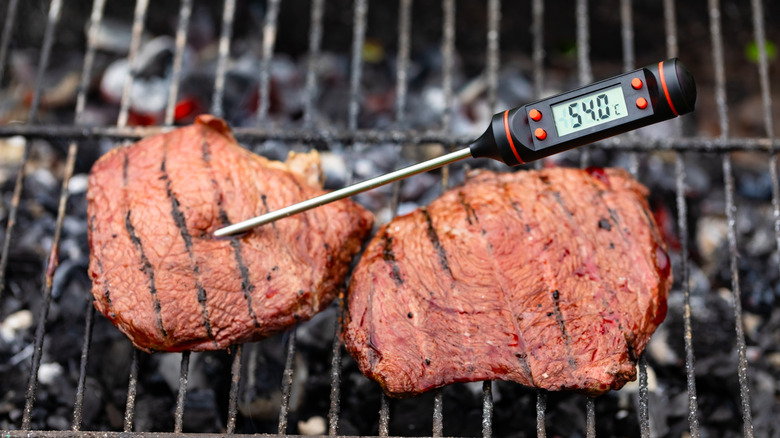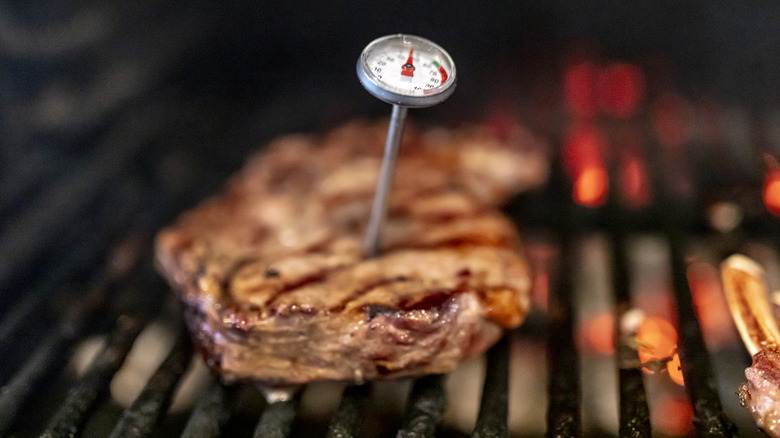How To Use A Thermometer To Check Heat Levels While Grilling
Many home cooks and grill masters cook up their steaks and hamburger patties using the old-fashioned eyeball test. This is when you flip the patty after it turns brown and grill marks start appearing. Cooking off sight alone can often work okay, but the color of the meat really isn't the most reliable way to know for sure how well it's been cooked. It's a challenge to precisely measure the meat's internal temperature unless you're using a meat thermometer correctly. But, even once you have the proper type of thermometer (not a human, fever-checking thermometer; or a candy thermometer, which is different than a meat thermometer), do you even know the best way to use it?
We spoke to Vivian Villa, chef and founder of UnButter plant-based butters, for help on grilling with thermometers right. Different types of meat thermometers go in different places, Villa explains, and lots of modern digital options have useful bells and whistles if you take advantage of them. According to Villa, "Barbecue thermometers placed directly on the grill (similar to an oven thermometer) are a good option, digital thermometers embedded in roasts provide great accuracy, and ones that connect to the user's phone to alert of temp changes are also a great option." Check the fine print on whatever thermometer you're considering, because instructions may vary.
Know your meat thermometers
Another helpful tip to remember about meat thermometers: know what temperature you're shooting for. The U.S. Department of Agriculture (USDA) suggests a safe minimum temperature of 145 degrees Fahrenheit for beef, and 160 degrees Fahrenheit for ground beef — although rare steaks can go lower to about 120 degrees Fahrenheit. If you're sticking your thermometer directly into the food, you should aim for the thickest part of the meat.
For thinner burgers where a thermometer may not stand upright, Vivian Villa's suggestion of a barbecue thermometer comes in handy. Sometimes these thermometers solely provide a temperature gauge, like the oven thermometers you'll find amongst Ina Garten's favorite kitchen tools. Other times, they're infrared and resemble futuristic laser weapons. All of these options measure the temperature of the barbecue grill; just remember there's a difference between measuring the grill temperature, and measuring the internal temperature of the meat. If you opt for one of these, Villa suggests buying one other thing to help. She says, "A cast iron cooking plate placed in the barbecue will give the most accurate reading from a thermometer, as it holds and retains heat; pointing the infrared at the grills will provide inaccurate readings, as there are hotspots in the grill."

